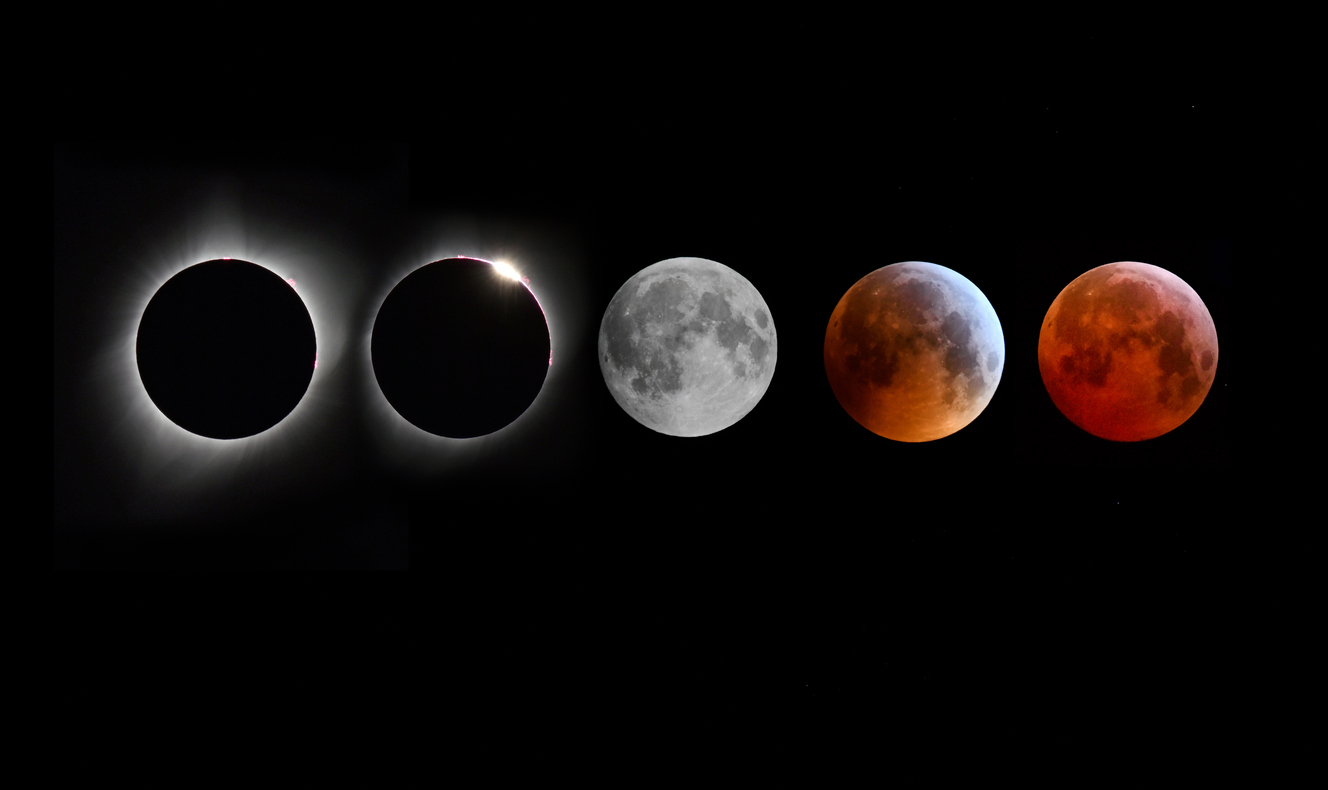On August 21, millions of people will look up to the sky for the Great American Eclipse of 2017. During the solar eclipse, the moon will block out the light from the Sun leaving only a blazing corona visible to the total observers. The eclipse will begin near Lincoln Beach, Oregon at 9:05am PDT.
The point where the moon first starts to cross the path of the Sun is called ‘first contact’ (not to be confused with communication with aliens, although that would be cool). Totality is when the moon fully blocks the light of the Sun, and this will happen at 10:16am PDT, as seen from Oregon.
Over the course of an hour and a half, the shadow will cross along a path, about 113 km wide, across the United States. If you wanted to view totality for the longest time possible, you should head to Carbondale, Illinois, where it will last for about 2 minutes and 40 seconds.

What is an Eclipse?
There are two types of eclipse, a lunar eclipse and a solar eclipse. During a lunar eclipse, the Earth passes in between the sun and the moon and blocks any light from reaching the moon and reflecting back off it. Thus the moon appears dark.
During a solar eclipse, the moon passes in between the sun and the earth and aligns just right so that is blocks the light from the sun and casts a shadow across certain parts of the earth. This shadow is called the path of totality. It’s a path is created by the rotation of the earth and the combined orbits of the earth and the moon around the sun.
You can have partial or total solar eclipses. The only time you'll see the the sun as a bright ring around the black circle of the moon, is during a total solar eclipse just like the one we will see in August 2017.
In Ancient times, people had no idea what was going on during an eclipse. It was believed to be an evil omen, or perhaps a giant wolf eating the Sun. Humans would scream and shout at the "beast" until the shadow passed. They believed that they had scared it away. Now science has shed some light on the situation and we know that it’s nothing to be afraid of.
How Often do Solar Eclipses Happen?
Total solar eclipses actually occur about once every 18 months, somewhere on Earth. The last one seen from America was on February 26, 1979 and it only covered a very narrow band (As seen below, inside the blue lines).

The last total eclipse seen from America with a path similar to the 2017 eclipse was is June of 1918, almost 100 years ago!
What’s really spectacular about this specific eclipse, is the time of technology that we now live in. We now have smart phones, telescopes and all kinds of devices to document this event. In fact, there are a number of citizen science projects you can participate in. Check out Citizen CATE and project EclipseMegaMovie to see how you can contribute to real scientific data.

A Cosmic Coincidence

Have you ever wondered why the Sun and moon seem the same size in the sky? And not just kind-of-the-same size, but exactly the same size? This is due to the fact that the sun is 400 times bigger than the moon, but 400 times further away from Earth, resulting in this perfect ratio. Without this, total solar eclipses could not exist.
Safety First
Remember, you should never look directly at the sun. Grab yourselves some eclipse glasses to protect your eyes. If you can’t find eclipse glasses, or you would like to build your own pinhole projector, here are other safe ways to view the eclipse.
Join us August 21 and watch the Eclipse live from False Creek.
We have eclipse glasses available and programming all day! Check out event page for more information.
